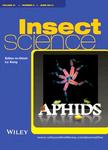Simulating small-scale climate change effects-lessons from a short-term field manipulation experiment on grassland arthropods
Simulating small-scale climate change effects-lessons from a short-term field manipulation experiment on grassland arthropods作者机构:Department of Ecology TU Berlin Institute of Landscape Ecology University of Munster Robert-Koch-Straβe 26 48149 Munster Ecosystem Analysis University ofKoblenz-Landau Fortstraβe 7 76829 Landau Germany
出 版 物:《Insect Science》 (昆虫科学(英文版))
年 卷 期:2013年第20卷第5期
页 面:662-670页
核心收录:
学科分类:0710[理学-生物学] 0830[工学-环境科学与工程(可授工学、理学、农学学位)] 07[理学] 070601[理学-气象学] 0904[农学-植物保护] 0706[理学-大气科学] 0901[农学-作物学] 071002[理学-动物学] 0713[理学-生态学]
主 题:carabid beetles drought global wanning grasshoppers irrigation spiders
摘 要:Climate change is expected to cause major consequences on biodiversity. Understanding species-specific reactions, such as species shifts, species declines, and changes in population dynamics is a key issue to quantify large-scale impacts of climate change on biotic communities. As it is often impossible or at least impracticable to conduct large-scale experiments on biotic responses to climate change, studies at a smaller scale may be a useful alternative. In our study, we therefore tested responses of grassland arthropods (carabid beetles, spiders, grasshoppers) to simulated climate change in terms of species activity densities and diversity. We conducted a controlled field experiment by changing water and microclimatic conditions at a small scale (16 m2). Roof constructions were used to increase drought-like conditions, whereas water supply was enhanced by irrigation. In all, 2 038 carabid beetles (36 species), 4 893 spiders (65 species), and 303 Orthoptera (4 species) were caught using pitfall traps from May to August, 2010. During our experiment, we created an artificial small-scale climate change; and statistics revealed that these changes had short-term effects on the total number of individuals and Simpson diversity of the studied arthropod groups. Moreover, our results showed that certain species might react very quickly to climate change in terms of activity densities, which in turn might influence diversity due to shifts in abundance patterns. Finally, we devised methodological improvements that may further enhance the validity of future studies.



